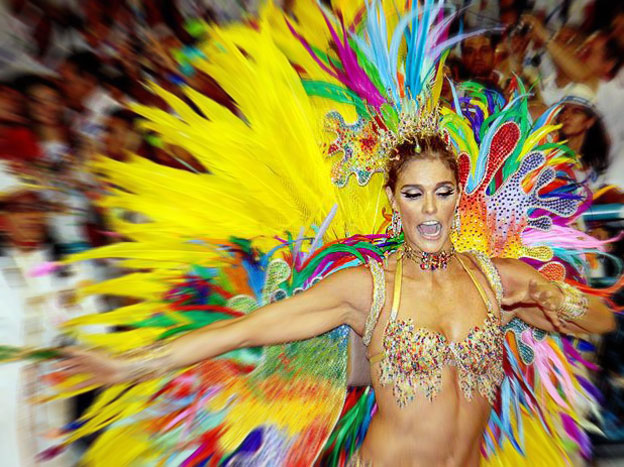Vacations to South America offer the best value in terms of international holiday choices for Australians
Planning a trip to South America for your holiday is an incredible opportunity. Not only because of the inherent natural beauty that awaits you, but also due to the advantages you gain in terms of paying less for more. The reason is that most countries in South America favor the Australian Dollar (AUD) in their rates, meaning that, considering the past couple of years and present currency exchange, Australians can obtain a superior price-value ratio when planning their holidays to these regions. The National Currency of Brazil (Brazilian Real R$) has lost value consistently against the AUD and current prices make these destinations the perfect retreat – filled with pleasure and adventure at an affordable cost.
Brazil is the most well-known country in South America. It is renowned for its beautiful, vibrant beaches and giant mountain ranges that provide an exquisite backdrop for tourists and locals alike. The city’s landmark is Christ the Redeemer is a 38 meter Art Deco statue of Jesus Christ welcoming visitors to Corcovado Mountain perched high above the city below.
Image: youtube.com
One of the biggest carnivals in the world is the Rio Carnivale, held from the 1st-9th of March in 2019. Music, street festivals and dancing converge at this time of the year, resulting in lavish parades and extravagant parties throughout Rio de Janeiro. The streets come alive with laughing, dancing and endless fun alongside approximately 2 million other people.
For a more comprehensive guide to visiting Brazil please please see our guide.
Image: www.ibtimes.co.uk
In the past 5 years, the Brazilian Real has constantly depreciated with respect to the AUD, making it possible for Australians to spend less and experience more.
Image via xe.com
The numbers indicate that you’ll definitely enjoy the value of your money in Rio but if you want to feel the vibration of Latin America outside of Brazil then Argentina & learning to dance the Tango in Buenos Aires should be on your bucket list. Infamously easy to learn, this dance brings out the warmth and friendliness of people to the surface irrespective of the harmony of their movements. Certainly an authentic experience for travellers who want to step into the shoes of a local.
Image: hotel-magazine.com
The capital city of Argentina is another one of the incredible value spots for Australian vacations. Sports enthusiasts are recommended to experience a Boca Juniors vs. River Plate football match. The festivity, intensity of emotions and engaging shows put on by the crowd’s often make the stands look as exciting as what’s happening on the pitch itself.
Image:xe.com
If you feel closer to nature, the majesty of Iguazu Falls might be exactly what you need. These wondrous cascades are located on the junction of the Brazil, Argentina and Paraguay borders with many airlines within Argentina and Brazil offering direct flights from larger cities to this beautiful site.
Image source: sploid.gizmodo.com
For a dose of history and heritage in South America, Peru’s Cusco is very popular due to its Incan architecture and Renaissance cathedrals. This world heritage site at the base of the Andes is famous for the ancient ruins of Saksaywaman, whose mysteries have yet to be fully deciphered by modern science. Baroque constructions and churches from the 1500s make it the perfect place to start exploring South American Culture. Even though the Peruvian Nuevo Sol has steadily gained in value relative to the Australian Dollar in the past couple of years, this country is currently one of the most affordable destinations on our list.
Image: tarainperu.wordpress.com
Another popular destination in South America is Bolivia, housing the amazing Salar de Uyuni, the world’s largest salt flat and home to the iconic species of pink flamingos. This stunning formation of prehistoric lakes is not only picturesque but also teaming with unique wildlife.
Further North on the continent, The Santuario de las Lajas in Colombia should be of particular interest to Australians coming to South America since the AUD has gained a bit over 30% in relation to the Columbian Peso. Here, you can find the Las Lajas Sanctuary, a Gothic Revival style church built in the 20th century that attracts millions of pilgrims every year due to its incredible architecture and religious connections. According to a folklore legend, an apparition of Virgin Mary took place here as a miracle in 1754 and the image is still visible on the stone to this day.
Image: xe.com
South America offers more than meets the eye, from natural beauty to man-made ancient wonders the arsenal of tourist attractions rivals any other continent in the world. Travel from the top of the mountains to the warmth of the beaches and everything in between. Australians can explore South America with value for Australia Dollar being at record highs.
Please feel free to write about your South American recommendations and experiences in the comments below so that others can benefit on their travels.
*We aim to provide up to date content and information. If any information provided is no longer correct then please email us at optimisetravelaustralia@gmail.com or post in the comments section




















